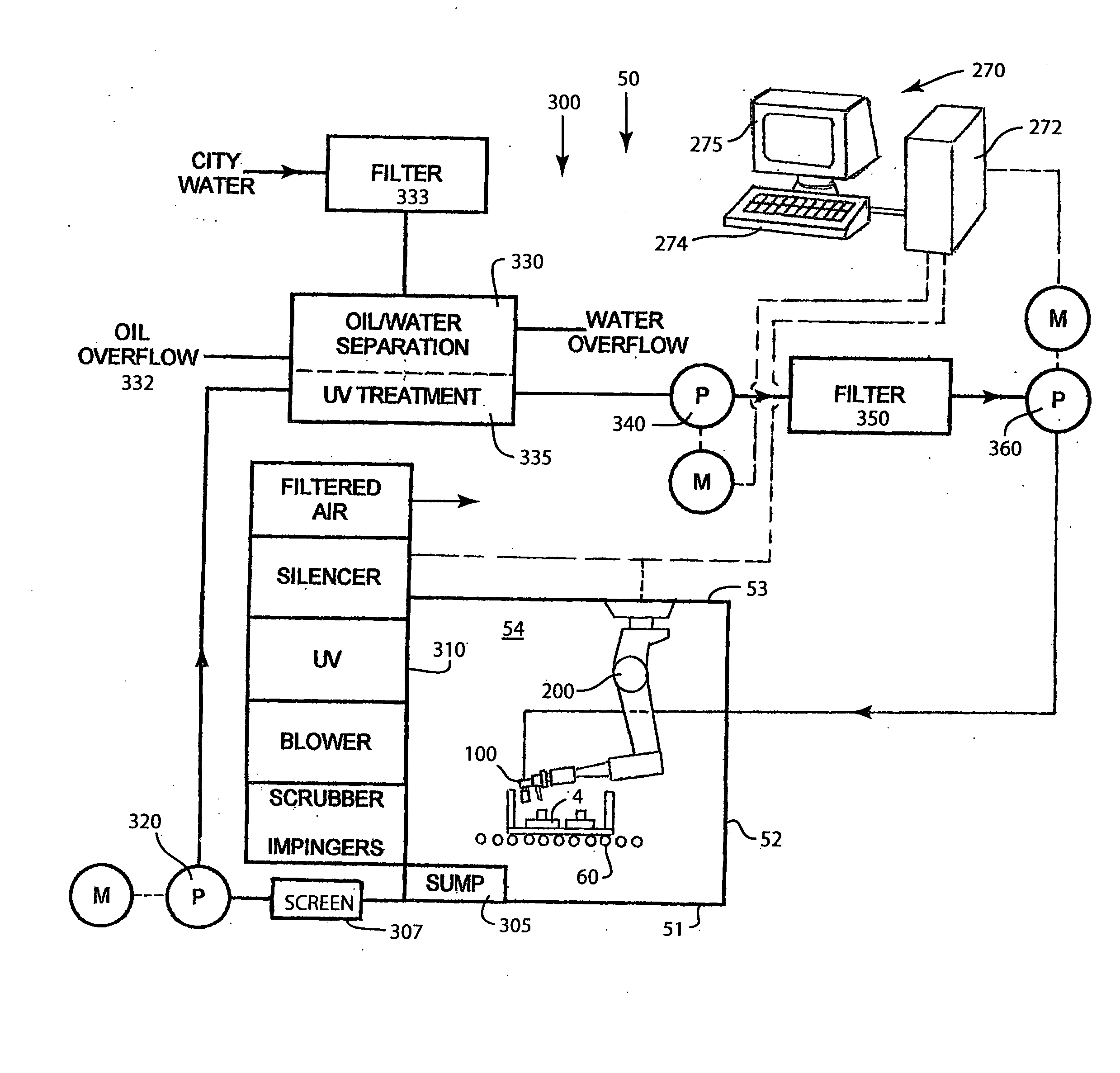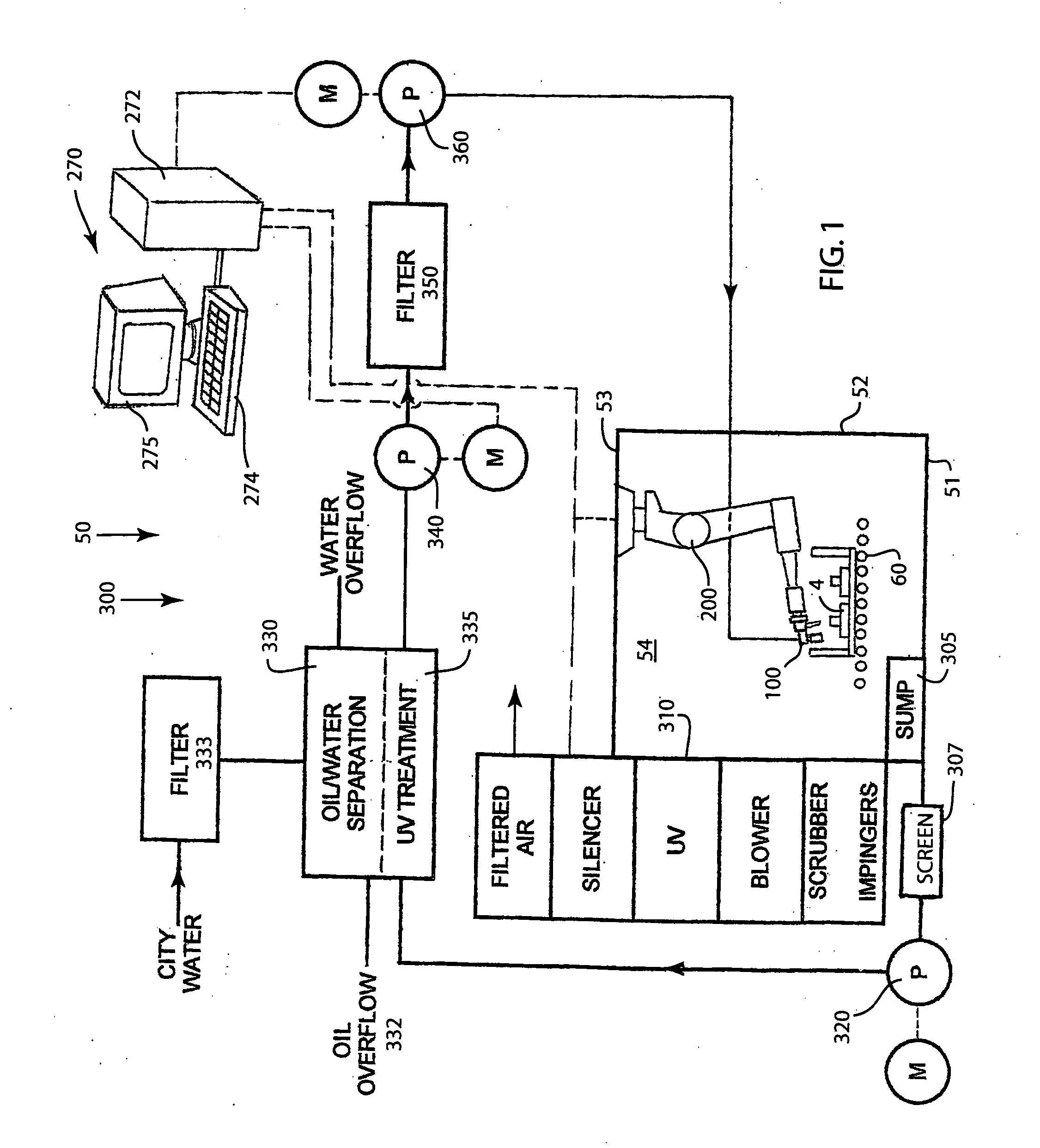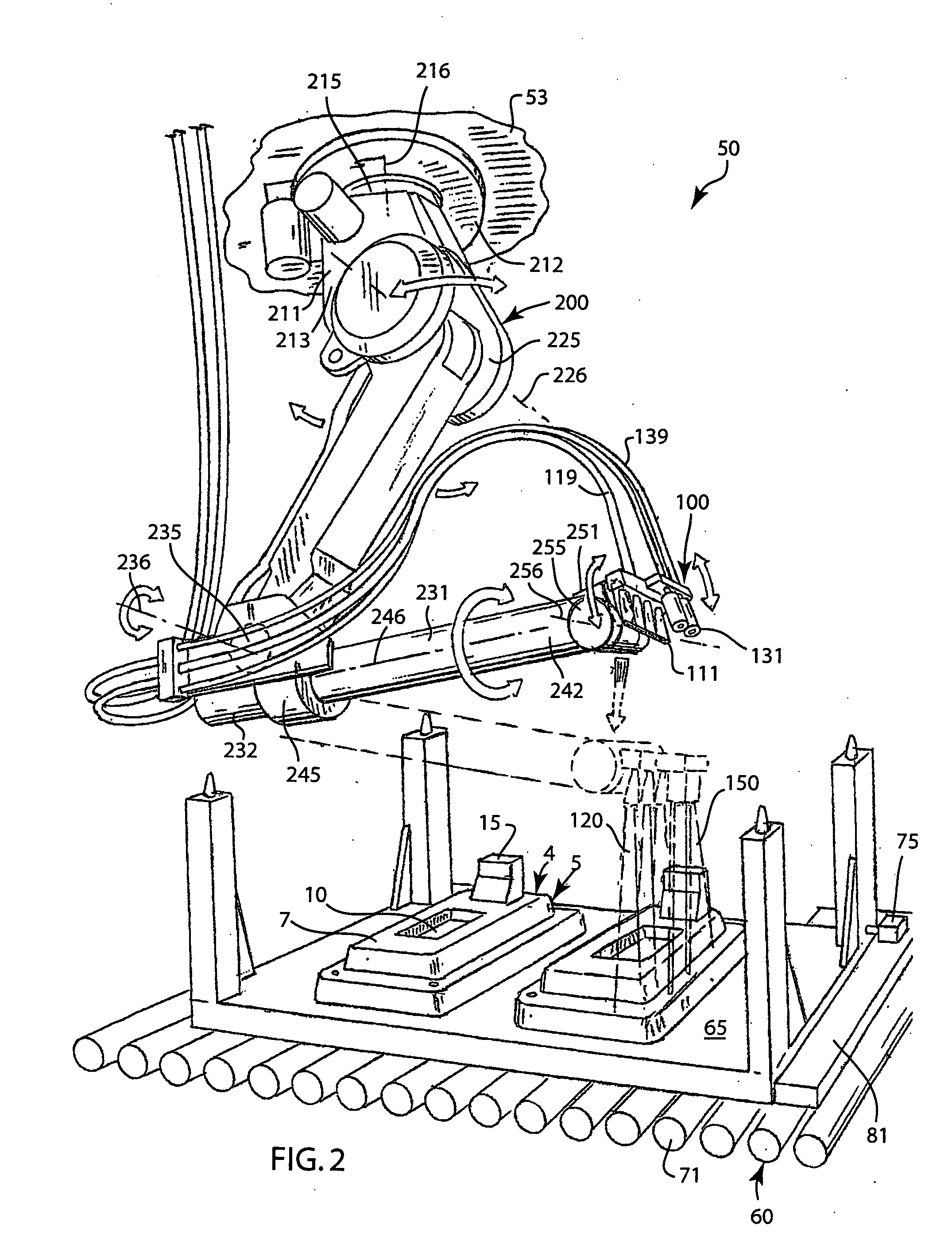Robotic wash cell using recycled pure water
a technology of pure water and robotics, applied in the direction of cleaning using liquids, program control, instruments, etc., can solve the problems of manufacturing problems, contamination, oil and grease of objects, and the difficulty of conventional robotic washing systems to clean contaminants, oil and grease from objects
- Summary
- Abstract
- Description
- Claims
- Application Information
AI Technical Summary
Benefits of technology
Problems solved by technology
Method used
Image
Examples
Embodiment Construction
[0042] While this invention is susceptible of embodiments in many different forms, the drawings show and the specification describes in detail a preferred embodiment of the invention. It should be understood that the drawings and specification are to be considered an exemplification of the principles of the invention. They are not intended to limit the broad aspects of the invention to the embodiment illustrated.
[0043] The present invention relates to a robotic wash cell using a recycling pure water system that is generally indicated by reference number 50 and shown in FIGS. 1 and 2. The robotic wash cell 50 is particularly suited to clean objects 4 that are at least partially covered or coated with a contaminant such as oil or grease. Oil and grease are particularly difficult to clean or remove from an object 4 because they form a thin film that clings to the surfaces of the object. The present invention is able to clean these contaminants and their films from objects 4, even when...
PUM
| Property | Measurement | Unit |
|---|---|---|
| depth | aaaaa | aaaaa |
| pressure | aaaaa | aaaaa |
| temperature | aaaaa | aaaaa |
Abstract
Description
Claims
Application Information
 Login to View More
Login to View More - R&D
- Intellectual Property
- Life Sciences
- Materials
- Tech Scout
- Unparalleled Data Quality
- Higher Quality Content
- 60% Fewer Hallucinations
Browse by: Latest US Patents, China's latest patents, Technical Efficacy Thesaurus, Application Domain, Technology Topic, Popular Technical Reports.
© 2025 PatSnap. All rights reserved.Legal|Privacy policy|Modern Slavery Act Transparency Statement|Sitemap|About US| Contact US: help@patsnap.com



